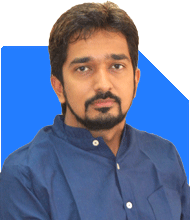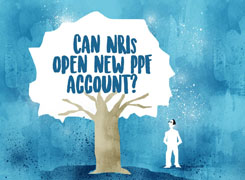Should I increase my Rs. 40k monthly MF investment and how should I adjust my portfolio for a Rs. 1 cr corpus in 10 years?

I am investing monthly around Rs 18,000 in MFs, as per the following: Canara Robeco Small capMF - Rs 4.5k, PGIM Mid Cap Opportunities - Rs 4.5k, Tata Digital - Rs 4.5k, Quant Active - Rs 4.5k. I am intending to increase monthly investment in MF from present Rs 18k to Rs 40k & needed a corpus of at least 1 cr in next 10 years. Can you check suggest if my portfolio needs any changes or the same appears to be in order?
Portfolio Review:
• Canara Robeco Small Cap Fund: Good for aggressive growth but highly volatile. Keep it if you're comfortable with higher risk.
• PGIM Mid Cap Opportunities Fund: Another growth-oriented fund with decent potential. It's good to have some exposure to mid-caps.
• Tata Digital Fund: Sectoral funds are risky because they are dependent on the sector's performance. Digital/technology funds can be volatile; consider reducing exposure here.
• Quant Active Fund: A multi-cap approach with flexibility across market caps. This fund provides balance and is good for diversification.
Suggestions:
• Increase Allocation to Large Cap/Index Funds: You may want to balance your portfolio with a large-cap or index fund like UTI Nifty 50 or Mirae Asset Large Cap Fund. Large-cap funds provide stability and reduce overall portfolio volatility.
• Reduce Sector-Specific Exposure: Consider trimming your allocation to Tata Digital Fund, as sectoral funds can face prolonged underperformance during sector downturns. You can reallocate this to a more diversified fund.
• Balanced Fund: Add a balanced or hybrid fund like HDFC Balanced Advantage Fund or ICICI Prudential Balanced Advantage Fund for better risk management while maintaining growth potential.
• Debt Component: To hedge against equity risk, consider adding a small portion to a short-term debt fund or gilt fund, which can provide stability during volatile periods.
Suggested Structure After Increase:
• Canara Robeco Small Cap Fund: Rs 6,000
• PGIM Mid Cap Opportunities Fund: Rs 6,000
• Quant Active Fund: Rs 6,000
• Mirae Asset Large Cap Fund: Rs 6,000
• HDFC Balanced Advantage Fund: Rs 6,000
• ICICI Prudential Multi Asset Fund: Rs 5,000
• UTI Nifty 50 Index Fund: Rs 5,000
This adjusted allocation will maintain growth potential while providing a cushion against volatility.
You may like to see similar questions and answers below
Omkeshwar Singh | Answer |Ask -Follow
Head, Rank MF - Answered on Apr 05, 2022
Omkeshwar Singh | Answer |Ask -Follow
Head, Rank MF - Answered on Nov 02, 2022
Ramalingam Kalirajan |10925 Answers |Ask -Follow
Mutual Funds, Financial Planning Expert - Answered on May 29, 2024
Dev Ashish | Answer |Ask -Follow
MF Expert, Financial Planner - Answered on Apr 26, 2023
Ramalingam Kalirajan |10925 Answers |Ask -Follow
Mutual Funds, Financial Planning Expert - Answered on May 05, 2024
Reetika Sharma |459 Answers |Ask -Follow
Financial Planner, MF and Insurance Expert - Answered on Dec 24, 2025
Reetika Sharma |459 Answers |Ask -Follow
Financial Planner, MF and Insurance Expert - Answered on Dec 24, 2025
Reetika Sharma |459 Answers |Ask -Follow
Financial Planner, MF and Insurance Expert - Answered on Dec 24, 2025
Reetika Sharma |459 Answers |Ask -Follow
Financial Planner, MF and Insurance Expert - Answered on Dec 24, 2025
Reetika Sharma |459 Answers |Ask -Follow
Financial Planner, MF and Insurance Expert - Answered on Dec 24, 2025
Reetika Sharma |459 Answers |Ask -Follow
Financial Planner, MF and Insurance Expert - Answered on Dec 24, 2025
Reetika Sharma |459 Answers |Ask -Follow
Financial Planner, MF and Insurance Expert - Answered on Dec 24, 2025
Reetika Sharma |459 Answers |Ask -Follow
Financial Planner, MF and Insurance Expert - Answered on Dec 24, 2025
Reetika Sharma |459 Answers |Ask -Follow
Financial Planner, MF and Insurance Expert - Answered on Dec 24, 2025
Reetika Sharma |459 Answers |Ask -Follow
Financial Planner, MF and Insurance Expert - Answered on Dec 24, 2025
























